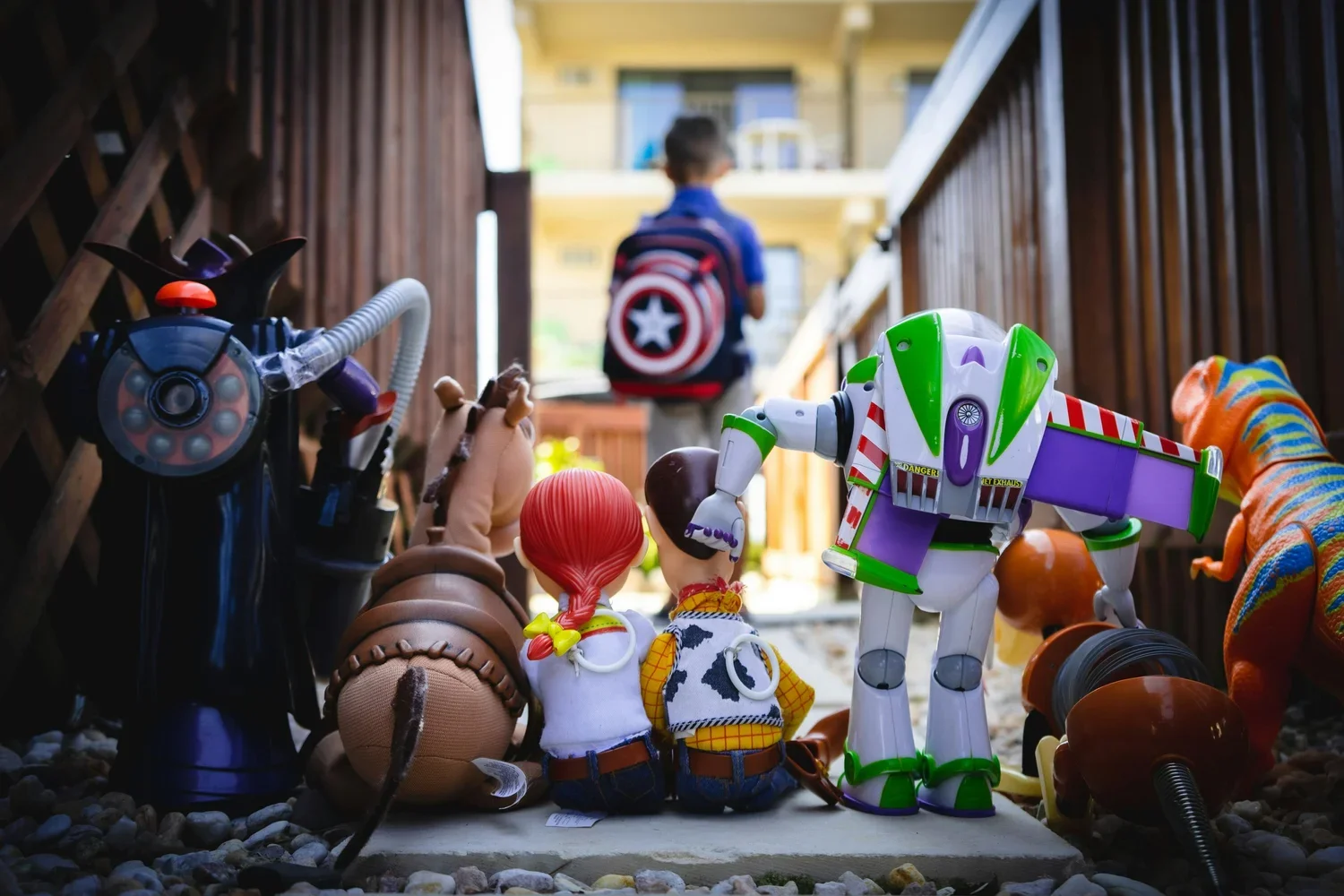Your favorite childhood classics are getting older: join in on a trip down nostalgia lane
Essay - Vivien Vetriolo
Toy Story (1995), The Goonies (1985) and Back to the Future (1985) are all films celebrating their anniversary this year. These films belong in the category of movies that never truly fade. They are in a way brighter screens — illuminating not only our childhood, but also our memories.
Before we had streaming platforms for films, video rental stores and cinemas that was the place to go to see new films. Photo: Jeremy Yap / Unsplash
Toy Story (1995) - Passing on the torch
There are many films that glow in our memories, such as Toy Story. First released in 1995, the animation film was revolutionary not only because it was the first computer-animated cartoon - a feature that made screens literally brighter and lighter - but also because it made people feel alive. The bright blue sky above Andy’s room and the humming of the toys were both part of the way Pixar projected the definition of childhood in pixels and light.
Photo: Chris Hardy / Unsplash
Beneath the light mood and colours lie a deeper meaning of the film: the art of letting go of things and situations we eventually outgrow. The film follows the arc of Andy’s growth from being a child to a teenager. Consequently, he also outgrows his toys.
The film teaches us not only of letting go of versions that no longer belong to us, but also that love can remain alive despite changed lives. Children watching Andy play with Woody and Buzz in his bedroom could see their own reflection in Andy: the bedroom was a stage for imagination, limitlessness and safety. Adults watching, well, they perhaps felt more the pain of knowing that the days of their youth were numbered.
Toy Story transplants this truth into plastic and pixels. The bright colours stand in contrast to the melancholic message of the film. In Toy Story 3 and 4 the light shifts. The world does not belong to Andy anymore, but to Bonnie. The toys keep living, but for someone new. Just as much as the stories we used to love now belong to someone else. The light does not go out, it burns for someone else.
Toy Story represents a nostalgic escape, where we can see ourselves in a space between imagination and loss. You could say the TV screen shines brighter because we, as former children ourselves, now understands more about love, time, and memory.
Goonies never say die
Copyright: Warner Bros. Entertainment Inc / Imdb
With The Goonies (1985), we now enter a different chapter of life - from childhood to our teenage years. Released ten years prior to Toy Story, the adventure film captures the golden haze of youth. With muddy sneakers and secret maps the group of friends embark on a journey to find a treasure that has been hidden in underground tunnels.
The style of the film is not as clean and polished like in Toy Story. It is wilder and more chaotic. The whole film gives a sense of having different possibilities - a metaphorical representation of what it can feel like to grow up.
When I watch The Goonies now that I am older, it reminds me of the feeling that the world is big. It is a film about chasing the impossible, led by young adults who were still learning how to navigate life. Rewatching this childhood classic as adults, we might think of the freedom we used to have when we were teenagers, with endless summer nights, not having to go to work - the freedom we had before adulthood forced us into a more structured, less spontaneous routine.
The message of the film shines brightly throughout the story: there is comfort in togetherness. Mikey, Mouth, Data, Chunk, and the other friends, reflect over the fragile and imperfect friendships of their teens. In one moment they might fight and bicker, but when push comes to shove, they have each others’ backs and stick together. Their loyalty in the face of change reflects the emotional light of the film.
The famous quote: “Goonies never say die”, is not just one of Mikey’s lines, but a promise. One of the reasons the line has stood the test of time is because it resonates within us, because we all like to think that our friendships will last a lifetime, preserved under the layers of adult life.
Back to the Future: Nostalgia as an engine
Back to the Future (1985) approaches the topic of nostalgia and brightness differently. The main character Marty McFly does not simply look back metaphorically, but quite literally - he travels back to the time when his parents were young and had not met yet. The movie turns nostalgia into its central engine (pun indented).
Back to the Future (1985). Copyright: Universal Picture / Imdb
Glowing with neon lights and time-travel sparks, the film is bathed with the brightness of the 1950s. Underneath the humour and brightness though, is a serious wish: a wish to not revisit our own past, but rather the ones from our loved ones.
Nostalgia is not only about childhood, it’s about time in its fragility. The moment McFly steps into the DeLorean time machine, the screen bursts with light. That flash does not only represent the literal change in time, but a wish that lies withing some of us—the wish of wanting to revisit past times.
The setting of the fifties in USA represents America’s collective memory. Almost half a century later, the film still resonates with its viewers. It also resonates with viewers from around the world, which becomes obvious when you see that cinemas are showing anniversary screenings of the film this fall, including here in Oslo. The iconic DeLorean is not only an interesting instance of special effects in films, but it sublimely transmits the message that humans sometimes need to look back to revisit memories while moving forward. Back to the future reminds us that nostalgia is not about getting lost in the past, but much rather about keeping the light and memory alive.
Nostalgia through brighter screens
Toy Story, The Goonies and Back to the Future are living memories, projected in colour and light. The brightness of the screens illuminates the memories that we still carry with us. They remind us that the past still matters.



